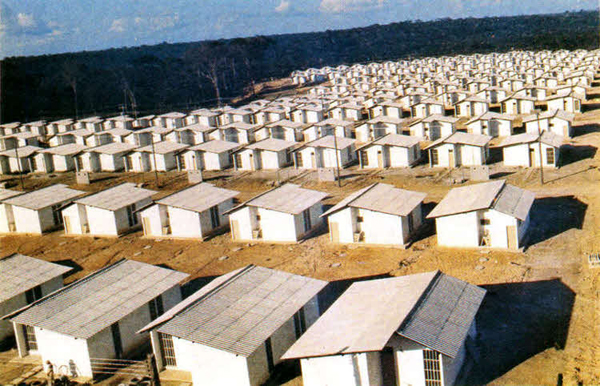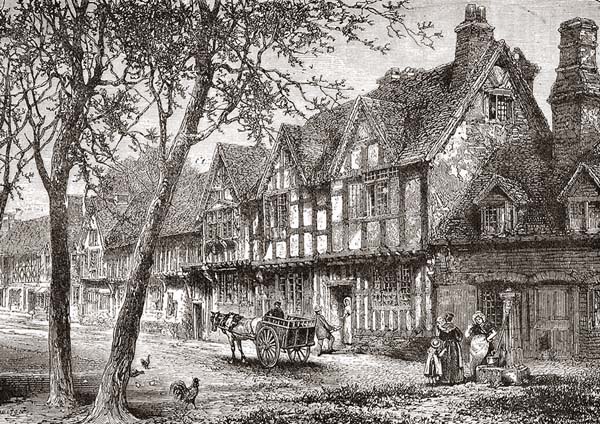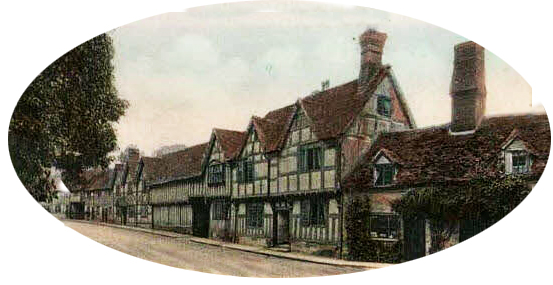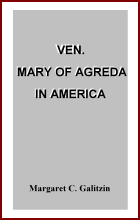Ambiences and Tendencies
 |
 |
 |
 |
 |
 |
 |
Mere Physical Comfort vs. Moral Well-being
To compare is one of the best ways to analyze. If we want to analyze our epoch, it is legitimate for us to compare it. And compare it to what? With the still incognito future? This is impossible because unknown objects cannot serve as a term of comparison. So, the comparison can only be with the past.
One of the most notable services of History consists precisely in this: to present us with a faithful image of the past so that we may better know the present. To make such a comparison is not to be nostalgic. It is to be clear, practical and direct in this noble exercise of the mind, which is the analysis.
Let us, then, look at two groups of popular dwellings: one, a traditional village in England, Warwick; and another. in a modern neighborhood of the city of Manaus in north Brazil, the residential complex called Manoa II.

These popular housing units of our times, similar to those in so many modern cities around the world, constitute a group of 3,500 residences made of cement, each with five rooms. What a treasure of technology and science in all this! Cement is a building material that results from a long practical and scientific evolution. In each of these dwellings, science made possible the advantages of running water, electric light, gas, the diversions of radio and television, the amenity of the telephone.
From this point of view, what an immense transformation in comparison to the old houses of Warwick, with their hygienic deficiencies, difficult living conditions, and, from some points of view, the physical discomfort that any habitant of the contemporary city would certainly feel in them!
On the other hand, what a psychological discomfort in these modern dwellings, with their inhuman standardization, the monotony and severity of their rectangular, somber shapes, similar to frowns, which reveal themselves in the walls of these houses, open to the eyes of all, to every noise, perhaps to all the winds!

Compare this coldness of line and substance – there is nothing "colder" than cement – to the recollection, warmth and harmony of the old houses of Warwick,
above, each of which seems to regard the passer-by with a placid smile imbued with familial bonhomie, containing within it the warmth of a lively domestic life, rich in moral values.
They are simple houses, unpretentious and pleasant to see, an image of the actual daily existence of its inhabitants. They are houses that follow the same style, but each one has its discreet but lively note of originality.
The terms of the comparison made, the conclusion is logical. As for the comfort of the body, we can be better served with the modern-type residences – at least when they have five good rooms like these. But from the point of view of comfort of soul, how much we lose!
Would it be possible to harmonize the two in a new style that serves both the comforts of the soul and the body? Style is much less a product of a man or of a team of men than of a society, an epoch, a civilization.
We do not believe that this new style will appear unless today's world becomes re-Christianized. And it is to prepare for this new fundamentally Catholic world that we must look with love at these memories of the Christian past of our civilization.


One of the most notable services of History consists precisely in this: to present us with a faithful image of the past so that we may better know the present. To make such a comparison is not to be nostalgic. It is to be clear, practical and direct in this noble exercise of the mind, which is the analysis.
Let us, then, look at two groups of popular dwellings: one, a traditional village in England, Warwick; and another. in a modern neighborhood of the city of Manaus in north Brazil, the residential complex called Manoa II.

From this point of view, what an immense transformation in comparison to the old houses of Warwick, with their hygienic deficiencies, difficult living conditions, and, from some points of view, the physical discomfort that any habitant of the contemporary city would certainly feel in them!
On the other hand, what a psychological discomfort in these modern dwellings, with their inhuman standardization, the monotony and severity of their rectangular, somber shapes, similar to frowns, which reveal themselves in the walls of these houses, open to the eyes of all, to every noise, perhaps to all the winds!

They are simple houses, unpretentious and pleasant to see, an image of the actual daily existence of its inhabitants. They are houses that follow the same style, but each one has its discreet but lively note of originality.
The terms of the comparison made, the conclusion is logical. As for the comfort of the body, we can be better served with the modern-type residences – at least when they have five good rooms like these. But from the point of view of comfort of soul, how much we lose!
Would it be possible to harmonize the two in a new style that serves both the comforts of the soul and the body? Style is much less a product of a man or of a team of men than of a society, an epoch, a civilization.
We do not believe that this new style will appear unless today's world becomes re-Christianized. And it is to prepare for this new fundamentally Catholic world that we must look with love at these memories of the Christian past of our civilization.


Catolicismo. n. 46, October 1954
Posted on January 4, 2019
Posted on January 4, 2019
______________________
______________________








